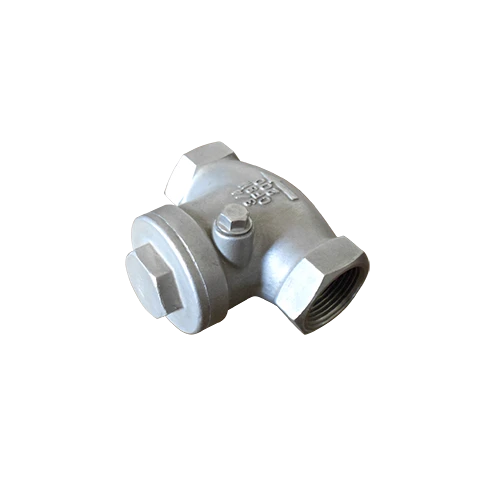Mobile:+86-311-808-126-83
Email:info@ydcastings.com
cf8 cf8m
Understanding CF8 and CF8M Stainless Steels Properties and Applications
Stainless steel has revolutionized industries across the globe, primarily due to its unique blend of strength, durability, and resistance to corrosion. Among the various grades of stainless steel, CF8 and CF8M are two widely recognized types, particularly in the field of cast stainless steel. This article delves into the properties, differences, and applications of CF8 and CF8M, highlighting their significance in modern engineering.
What Are CF8 and CF8M Stainless Steels?
CF8 and CF8M are types of austenitic stainless steel castings, classified under ASTM A351. The designation CF indicates that these materials are made through a casting process, with 8 signifying that they belong to the family of stainless steels primarily composed of 18% chromium and 8% nickel. While they share many similarities, the key difference lies in their chemical composition, particularly in the presence of molybdenum.
CF8 Stainless Steel CF8 is essentially equivalent to the 304 stainless steel grade. It is characterized by the following components - Chromium (Cr) 18% - Nickel (Ni) 8% - Carbon (C) Maximum of 0.08%
This composition provides CF8 with excellent corrosion resistance, making it suitable for a variety of applications, especially where exposure to atmospheric environments or mild corrosive substances is a concern.
CF8M Stainless Steel CF8M, on the other hand, is comparable to the 316 stainless steel grade, which incorporates molybdenum into its formulation, offering enhanced resistance to pitting and crevice corrosion. The typical composition is - Chromium (Cr) 18% - Nickel (Ni) 10% - Molybdenum (Mo) 2-3% - Carbon (C) Maximum of 0.08%
This addition of molybdenum significantly improves CF8M’s performance in more aggressive environments, making it a preferred material for applications involving chlorides and sulfur compounds.
Key Properties
.
2. High Strength Both grades offer good mechanical strength and are suitable for use in high-pressure applications. They maintain their strength even at elevated temperatures, which is a critical factor in many industrial processes.
cf8 cf8m

3. Fabricability Both CF8 and CF8M can be easily fabricated and welded using standard techniques. Their austenitic structure allows for good ductility, enabling them to be formed and shaped into various components.
4. Temperature Resistance These materials can withstand a wide range of temperatures, from cryogenic levels up to about 800°F (427°C). This makes them ideal for applications involving thermal cycles.
Applications
CF8 and CF8M stainless steels find extensive use across various industries
- Chemical Processing Due to their ability to withstand corrosive substances, CF8 is commonly used in chemical plants, while CF8M is preferred for applications that involve more aggressive chemicals, such as in marine and offshore environments.
- Food and Beverage Industry Both grades’ hygienic properties make them suitable for manufacturing equipment in the food and beverage sector, ensuring compliance with safety standards.
- Pharmaceuticals The biocompatibility and cleanability of CF8 and CF8M make them ideal for use in pharmaceutical manufacturing processes.
- Aerospace and Marine Applications Their strength and corrosion resistance make them suitable for harsh environments encountered in aerospace and marine applications.
Conclusion
In summary, CF8 and CF8M stainless steels are vital materials in various industrial applications, offering distinct advantages due to their compositions. While CF8 provides solid overall performance in less corrosive settings, CF8M excels in more challenging environments, thanks to its molybdenum content. Understanding these differences enables engineers and manufacturers to select the appropriate material for their specific needs, ensuring longevity and reliability in their applications.
-
Understanding Metal Casting TechniquesNewsApr.02,2025
-
Understanding Exhaust Manifolds for Enhanced Engine PerformanceNewsApr.02,2025
-
The World of Metal FabricationNewsApr.02,2025
-
Key Components for Pump and Turbo EfficiencyNewsApr.02,2025
-
Essential Tools for Automotive Maintenance and RepairNewsApr.02,2025
-
Durable Valve Components for Effective Water ManagementNewsApr.02,2025











